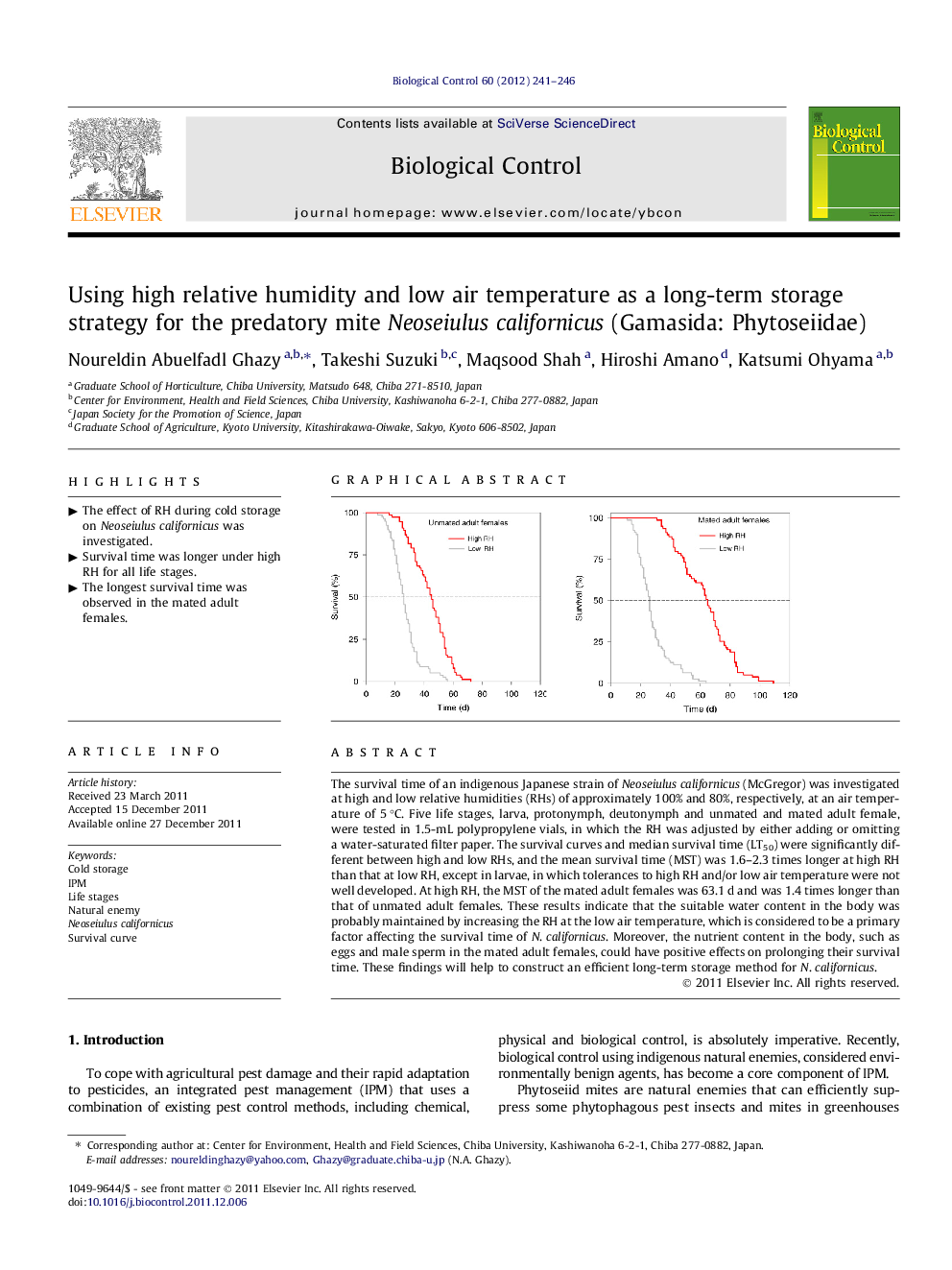| Article ID | Journal | Published Year | Pages | File Type |
|---|---|---|---|---|
| 4504086 | Biological Control | 2012 | 6 Pages |
The survival time of an indigenous Japanese strain of Neoseiulus californicus (McGregor) was investigated at high and low relative humidities (RHs) of approximately 100% and 80%, respectively, at an air temperature of 5 °C. Five life stages, larva, protonymph, deutonymph and unmated and mated adult female, were tested in 1.5-mL polypropylene vials, in which the RH was adjusted by either adding or omitting a water-saturated filter paper. The survival curves and median survival time (LT50) were significantly different between high and low RHs, and the mean survival time (MST) was 1.6–2.3 times longer at high RH than that at low RH, except in larvae, in which tolerances to high RH and/or low air temperature were not well developed. At high RH, the MST of the mated adult females was 63.1 d and was 1.4 times longer than that of unmated adult females. These results indicate that the suitable water content in the body was probably maintained by increasing the RH at the low air temperature, which is considered to be a primary factor affecting the survival time of N. californicus. Moreover, the nutrient content in the body, such as eggs and male sperm in the mated adult females, could have positive effects on prolonging their survival time. These findings will help to construct an efficient long-term storage method for N. californicus.
Graphical abstractFigure optionsDownload full-size imageDownload as PowerPoint slideHighlights► The effect of RH during cold storage on Neoseiulus californicus was investigated. ► Survival time was longer under high RH for all life stages. ► The longest survival time was observed in the mated adult females.
